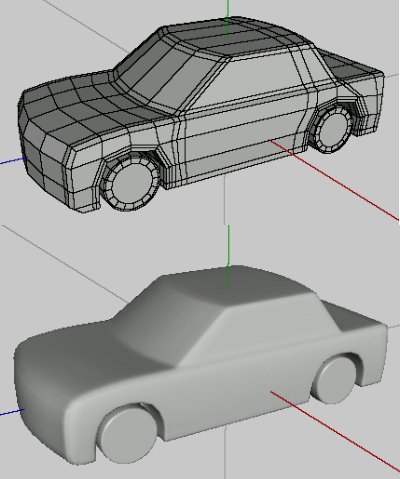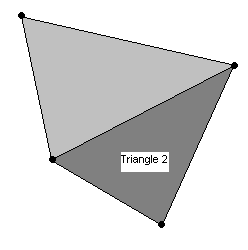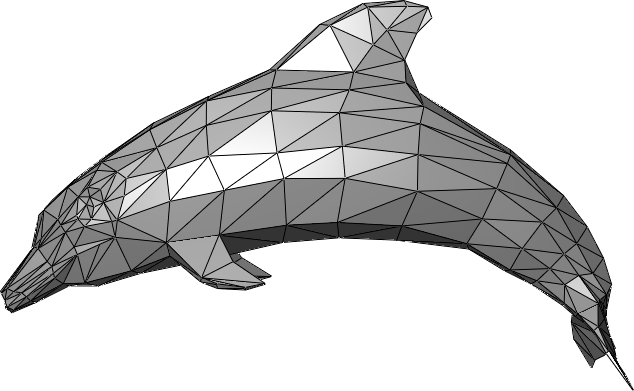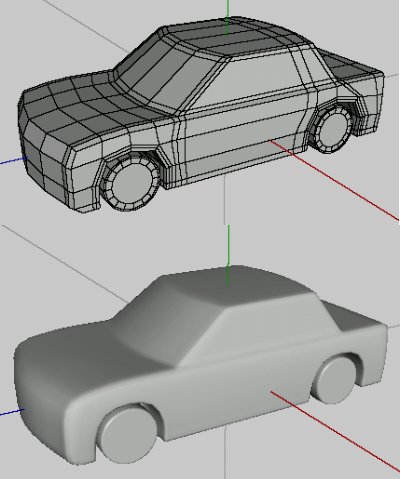
Polygonal (or polyhedral) modeling is the most common type of modeling for video games and animation studios.
This type of modeling builds 3D objects out of smaller components called “tris” (triangles) or “polys” (polygons).

Each poly or tri is a completely flat shape that is defined by the position of its vertices (or points) and its connecting edges.
Complicated models of any shape can be built completely out of tris or polys. As designers require more “high-fidelity” designs (smoother looking surfaces, more details, etc.), they can increase the number of polygons in their models.

| ADVANTAGES | DISADVANTAGES |
|
|
|
|
|
|
The features of polygonal modeling make it ideal for use cases where precision isn’t vital, and where visualization is more important. This is why animation studios and video game studios use polygonal models almost exclusively.
THE PROCESS OF HYBRID MODELING
Simply put, hybrid modeling combines the benefits of BRep, polygonal, point-cloud, and voxel-based modeling -- the four main types of 3D modeling -- into one workflow.
Software development kits like Spatial’s CGM allow 3D developers to build hybrid-modeling features natively into their toolset. This allows designers and engineers to seamlessly hop back-and-forth between modeling types without losing any data in the process. It allows engineers to run any simulation on their BRep files, and take those insights back to automatically tweak their models.
Powerful hybrid modeling software means you can shorten the process of model preparation and fill in the gaps that are typical of 3D models -- like simulating the behaviour of engineered models on a particle-basis.




.jpg?width=450&name=Application%20Lifecycle%20Management%20(1).jpg)















